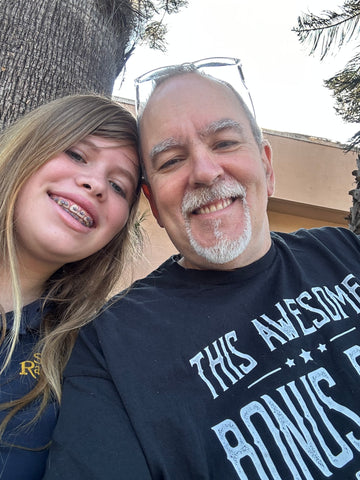In health and wellness, balance is a term we encounter frequently, but nowhere is it more crucial than within our Endocannabinoid System (ECS). As a cannabinoid researcher, I've observed firsthand the remarkable ways the ECS maintains this equilibrium, or 'tone', and the pivotal role of endocannabinoids in this process.
The ECS is an intricate network of receptors found throughout our body, designed to maintain homeostasis by regulating functions such as sleep, appetite, pain, and immune response. Endocannabinoids, such as Anandamide and 2-AG, are the naturally occurring compounds that activate these receptors. They have significant action in our body that we do not gain from plant-derived cannabinoids like CBGa, THC, and CBD.
"Why Are People Starving Themselves From THC? They can use CBGa for ECS Balance control and never miss their favorite cannabinoid, it's incredible how fast my life turned around once CBGa became a daily ritual."-Mike Robinson, Global Cannabis Educator
For this reason, maintaining an Endocannabinoid Balance is critical for all Cannabis users, but many ask, "What does this mean"? Most are reading blogs and posts online about taking Tolerance breaks when THC doesn't work so well anymore; few are learning how to Get Balanced, which is a concept to gain Endocannabinoid Balance Control.
Endocannabinoid Balance - A Quick Definition:
There's a critical point at which the receptors in our body made for Endocannabinoids begin to dysfunction. This situation is witnessed far more with the millions who use analogs of THC like Delta 8, 10, and other exciting creations that fire up the ECS - but haven't been studied much yet.
Those who have smoked THC Cannabis for quite some time build up what most call a "High THC Tolerance" when, indeed, it's a situation in which the use of external or plant cannabinoids has diminished the ability of the internal system to work.
Endocannabinoid Balance is achieved when our body has the right 'Tone' to the Endocannabinoid System - which means receptors are available and all endocannabinoids are present and doing their job. It's a perfect world concept often obtained with nature - but not synthetics.
The rise of the semi-synthetic Delta 8 was the pivoting point in my deep down-the-rabbit-hole research of ECS Balance Control and how to 'Get Balanced' far before trademarking both names.
CBGa, The Rising Star of ECS Balance Control:
CBGa, or Cannabigerolic acid, is often called the 'mother of all cannabinoids'. It is a precursor to these compounds and is crucial in establishing a balanced ECS tone. CBGa Crumble, a concentrated form of CBGa, can be particularly effective for individuals seeking to enhance their ECS function without the psychoactive effects of THC.
Interestingly, for those with a high tolerance to THC, replacing the traditional 'T Break' (a break from THC to reduce tolerance) with a focus on enhancing the endocannabinoid tone can be beneficial. Ingesting cannabinoids - most significantly, their precursor CBGa can help restore the sensitivity of the ECS receptors, potentially allowing for a more pronounced effect from THC when used. The best part is the consumer does not have to 'take a break'.
In essence, nurturing the endocannabinoid tone could be a more sustainable approach to achieving the desired effects from cannabinoids rather than cycling through periods of heavy consumption and complete abstinence. The future of cannabinoid research and therapy lies in understanding and manipulating this tone to promote health and well-being.
As we continue to study the ECS and its myriad influences on human health, it becomes increasingly clear that balance is not just a concept but a physiological state everyone should harness for therapeutic benefit.
By understanding and supporting our endocannabinoid tone, we unlock the potential to feel and live better.
References:
- Lu, H.-C., & Mackie, K. (2021). Review of the Endocannabinoid System. Biological Psychiatry: Cognitive Neuroscience and Neuroimaging, 6(6), 607–615. DOI.
- Lu, H.-C., & Mackie, K. (2016). An Introduction to the Endogenous Cannabinoid System. Biological Psychiatry, 79(7), 516–525. DOI.
- Ligresti, A., De Petrocellis, L., & Di Marzo, V. (2016). From Phytocannabinoids to Cannabinoid Receptors and Endocannabinoids: Pleiotropic Physiological and Pathological Roles Through Complex Pharmacology. Physiological Reviews, 96(4), 1593–1659. DOI.
- Mackie, K. (2008). Signaling via CNS cannabinoid receptors. Molecular and Cellular Endocrinology, 286(1-2 Suppl 1), S60–S65. DOI.
- Karimian Azari, E., Kerrigan, A., & O'Connor, A. (2020). Naturally Occurring Cannabinoids and their Role in Modulation of Cardiovascular Health. Journal of Dietary Supplements, 17(5), 625–650. DOI




